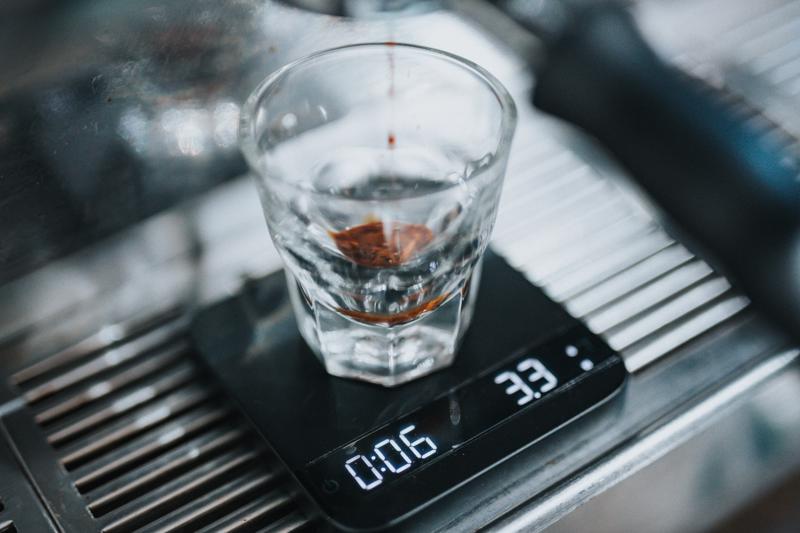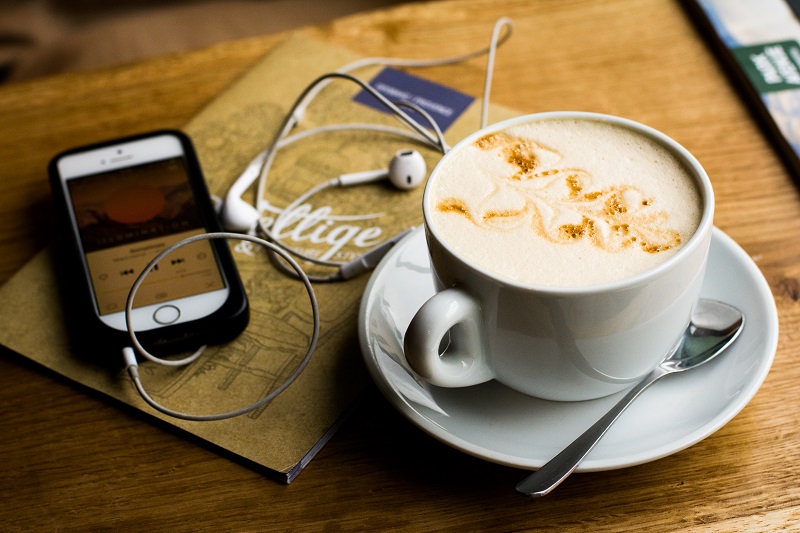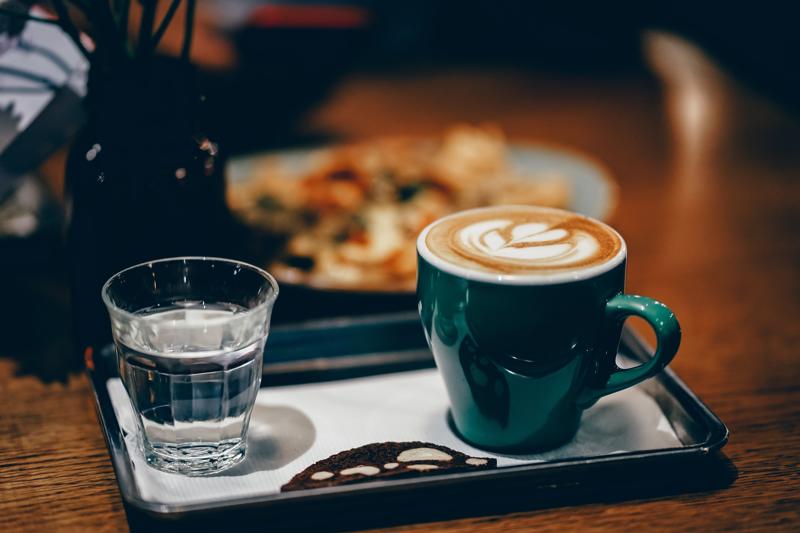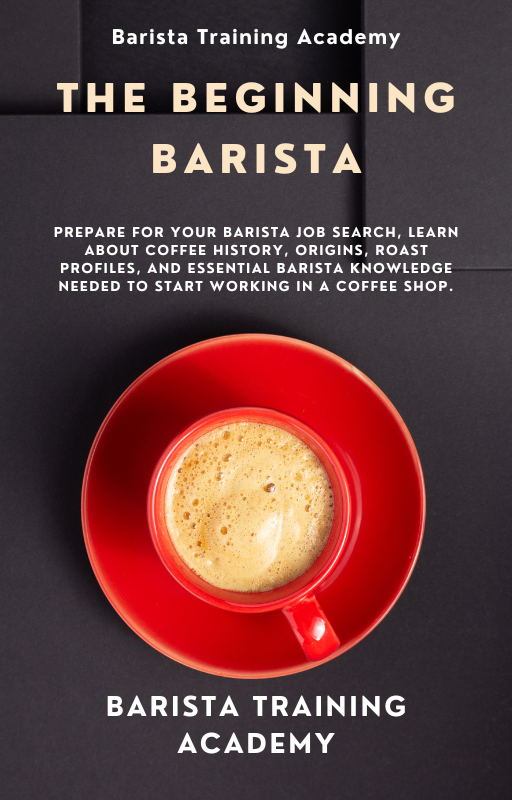Online Barista Training: Learning How to Pull a Perfect Shot
The first step in any online barista training is learning about the techniques and equipment necessary to pull a perfect shot of coffee. Read our selected barista tips on coffee preparation.
We'll pay special attention to the basic barista tools and the coffee brewing process in this online barista training course. Espresso is the foundation of your barista work. It's the basis for other coffee drinks on the menu. It means that if you know how to brew a perfect shot, your other drinks will come along easily.
Barista Tools
An espresso machine is used to pull espresso shots, which is the main ingredient of most coffee-based drinks. It works by heating water and forcing the water through coffee grounds under very high pressure. This makes a very high concentration of caffeine, which may be used in almost any drink.
An espresso grinder is the second most important tool. We store coffee beans in the hopper, and the grounds are dispensed underneath it. A good barista grinds only as much coffee as they need for one drink for better quality and taste.

A portafilter is a handled object you use to hold ground coffee beans and then lock in the espresso machine group head. Portafilters can be of three different sizes. The double-shot portafilter has two spouts. And the single- and triple-shot portafilters have one spout each. The single is a little bit smaller.
A barista uses a tamper to create a coffee puck. Tamping is essential to create a good espresso shot.
The steam wand of the espresso machine expels steam to heat, froth, and foam the milk. The amount of steam and foam depends on the drink you are making.
Other Barista Tools
The steaming pitchers are used to steam. There are three sizes: the largest is to steam milk for 20 oz drinks. The middle size is used for most other drinks like lattes and cappuccinos.
A barista might also use a thermometer while steaming milk to know that it has a perfect temperature. For common drinks, you steam milk up to 140F, and for extra hot – to 175F.
Syrups and sauces are used to flavor mochas and lattes, and blended drinks. You also use them as a basis for monthly specialty drinks.
Baristas use spoons very often, so you should keep them in an ice bath in a jug. They should be kept at 40 F or below so they don't get in touch with bacteria.

Pulling a Shot of Espresso
How to be a great barista? Well, the answer is knowing the whole 12-step process of pulling a good shot of espresso. First, you need to know the theory and then practice in your coffee shop until you do it almost automatically.
We'll lead you through each step of this process:
- Remove a portafilter and flush the group head.
- When you remove a portafilter, it will most probably be wet and covered with espresso. Wipe it off to make sure it's clean and dry before you pull your shot.
- Fill the portafilter basket with coffee grounds. Pull the tap repeatedly until you have a little mound of coffee in the middle. Rush the excess of the coffee grounds into the knock box with your finger. Make sure to ask your manager how you do it in your coffee shop because the leveling technique may vary from one coffee shop to another.
- Hook the portafilter on the edge of the counter and tamp the coffee with a moderate amount of force, holding your arm at 90 degrees.
- Clean loose grounds with your fingers.
- Place the portafilter directly into the group head.
- Start brewing your shot and observe the flow.
- The shot should take 20-30 seconds to brew. Once the shot has been brewed, it should be served within 30 seconds. Otherwise, it starts to expire.
- Unlock the portafilter from the group head, knock the used coffee grounds into the knock box.
- Use the group head to rinse the rest of the coffee grounds from the bottom of a coffee basket.
- Once it's clean, lock the portafilter back into the group head.
- Finally, after the shot is brewed, make sure that the rest of the area is clean before making your next shot.
An espresso shot should have three distinct layers: the nice layer of crema on top, the body, and the heart on the bottom. If you want to become a barista, you need to be very attentive to details.

Online Barista Training: How to Fix Incorrect Shots
During your barista training, you also need to learn incorrect examples and know how to fix them or dial-in your coffee accordingly. We want to show you just a few mistakes that new baristas tend to make. These useful barista tips will help you become a real coffee pro.
- The first thing you should be careful of is when pulling grounds into the portafilter from the grinder. If it's dosed improperly or there are not enough grounds, you'll get too much water in the shot.
- Tamping the shot properly is important to ensure that the water flows through the grounds correctly. If you don't tamp hard enough, there will be too much water in the shot. You will notice while brewing that it's coming way too fast and is very watery.
- If the shot is tamped too hard, the water will flow through it too slowly, and the resulting shot will taste bitter.
- Another place to be careful is when you lock the portafilter into the group head. If you lock it too lightly, the water will come out through the edges of a portafilter instead of through the basket's filter.
- An incorrect shout is also the one that has been sitting on the counter for longer than 30 seconds. Expired coffee has only two layers instead of three.

Barista Training Academy
Brought to you by Barista Training Academy, “The Beginning Barista,” Your Ultimate Prep Guide to Getting Your First Job as a Barista” is an ultimate resource that is available online. It is affordable for anybody who is looking to start a career in the coffee industry. For more information, visit our blog.
